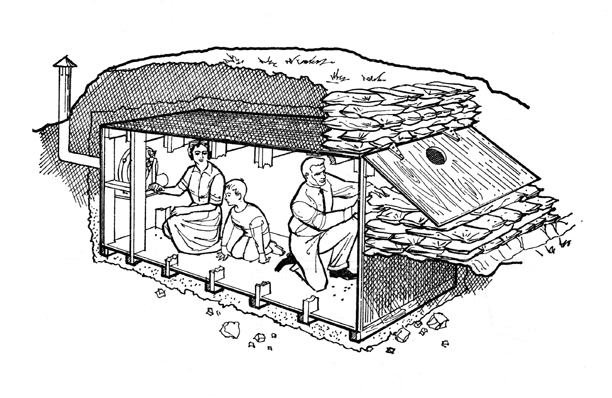
Public Emergency Radio
Operating 24 hours a day on a longwave frequency of 179 kHz from Chase, Maryland, USA, WGU-20’s programming consisted of pre-recorded announcements and time checks. The broadcast had the mechanical sound of early speech synthesis systems but the message could be clearly understood, with time ticks in the background and a continuous announcement akin to the Speaking clock: “Good evening. This is WGU-20, a defense civil-preparedness agency station, serving the east central states with emergency information. Eastern Standard Time seventeen hours, twenty minutes, twenty seconds. Good evening. This is WGU-20, a defense civil-preparedness agency station, serving the east central states with emergency information. Eastern Standard Time seventeen hours, twenty minutes, thirty seconds. Good evening. …” (The recording was changed to “good morning” or “good afternoon” at the appropriate times of day.)
Utilizing the world’s first all-solid state, 50,000 watt, radio transmitter built by Westinghouse, the signal covered much of the eastern seaboard; reception reports (from as far away as Texas) were sent a special QSL card featuring Paul Revere on a horse, raising the alarm.
The station was quite a mystery for a while, with thousands of ham radio operators and radio hobbyists speculating about the nature of the station, until a small news article in Popular Electronics magazine outlined exactly what WGU-20 was.
Decision Information Distribution System
WGU-20 was originally designed to be part of the Decision Information Distribution System (DIDS) that would be used to alert the public of an enemy attack (along the same lines as the then-current Emergency Broadcast System). As originally envisioned, many home devices, including radios, TV and even smoke detectors, would have inexpensive longwave receivers built into them ensuring the that attack message would get out. A longwave frequency was chosen because the extended groundwave signal it produced was supposed to be relatively immune to the effects of a nuclear detonation.
Built for $2 million in 1973, WGU-20 was the prototype of ten DIDS “distribution stations”. These were to operate 50 kW at 167, 179 and 191 kHz with 700-foot towers. Besides the Maryland site, candidate sites for distribution stations were Maynard, Massachusetts; Mount Joy, Pennsylvania; Gray, Maine; Morristown, Tennessee; Starke, Florida or Chiefland, Florida; Mazomanie, Wisconsin; Carthage, Texas, Marshal, Texas or Seagoville, Texas; Alcova, Wyoming or Riverton, Wyoming; Mendota, California or Selma, California; Winslow, Arizona; Hermiston, Oregon; and Wallula, Washington.
These ten stations were to cover the 48 contiguous states. Alaska and Hawaii were to have special, unspecified arrangements. All DIDS stations would be partially below ground level and protected against blast and electromagnetic pulse effects.
The distribution stations would be activated by two “control stations” at 61.15 kHz, in Ault, Colorado and Cambridge, Kansas. These two stations would run 200 kW from 1,260-foot towers. Federal authorities would send the “go” signal by microwave and landline to the control stations. The ten distribution stations would then sign on and play taped messages to the public.
The DIDS system was never implemented and the job of attack warning in the US remained with the EBS (now the Emergency Alert System). However the 179 kHz frequency range was used by the government’s Ground Wave Emergency Network (GWEN) which, instead of notifying the public of a war, was supposed to be a (nuclear war) survivable communications network linking various military installations.
Filed under: influences by Michael Arcieri
Comments Off on Public Emergency Radio












